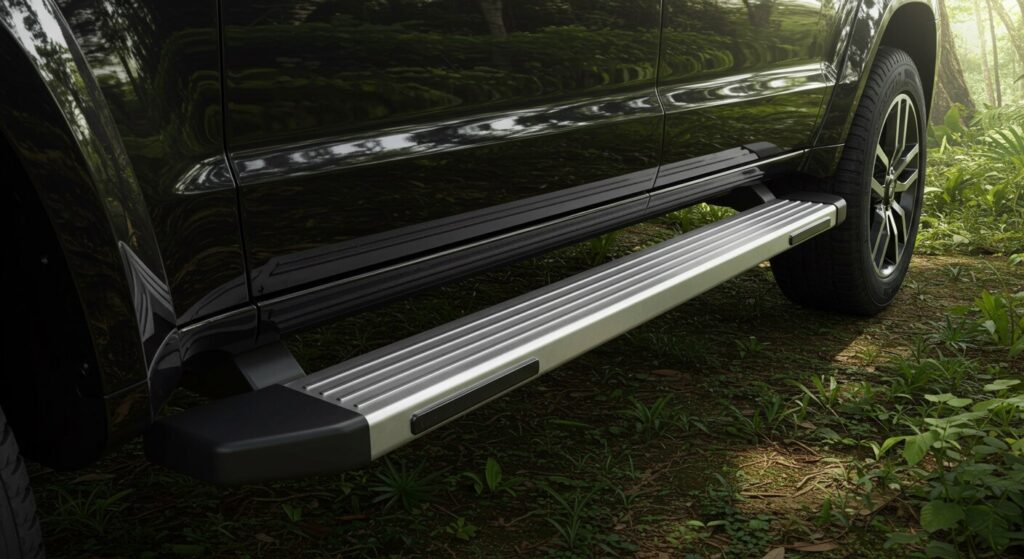When it comes to your truck or SUV, making it easier to get in and out is always a good idea, right? Plus, maybe you want some extra style or a little bit of protection from the road. You might have heard terms like nerf bars and running boards, and you’re wondering what the heck the difference is. Let’s get this all sorted out. They both serve a similar purpose – helping you step up – but they go about it in different ways, you see.
The Essence of Nerf Bars
Think tubular, like big pipes along the side. That’s the visual for nerf bars. They usually made of metal, like steel or aluminum, and got these handy step pads wherever you need ’em, at each door, for example. The diameter can vary, typically around 3 to 5 inches, offering a sturdy spot for your foot. They have origins in racing, originally designed to prevent crashes by keeping cars from getting too close, but now they’re found on all kinds of vehicles, especially trucks and SUVs.
Nerf bars often stick out a bit more than running boards, giving that tough, off-road type look. That lower profile also helps shorten the gap you gotta step over to get in, which is great for taller rigs. Plus, they offer decent protection for your rocker panels. If a rock jumps up or another door opens a bit too close, the nerf bar takes the hit instead of your vehicle’s body. They can be cab-length or go all the way wheel-to-wheel.
Understanding Running Boards
Okay, now for running boards. These are wider, more like a flat platform, providing a continuous stepping surface. They’re typically longer, extending from the front to the rear wheels. This wide, flat surface offers excellent stability and makes getting in and out real easy, especially for kids or older folks. The design is usually more sleek and integrated into the vehicle’s look, and they often come with a non-slip tread along their length.
Running boards generally mounted closer to the vehicle’s body, which helps maintain ground clearance. They’re also great for keeping your vehicle cleaner by acting as a barrier against mud and debris thrown up by your tires. And they are tough too, often supporting a bit more weight than nerf bars, with capacities up to 500 lbs. or more.
Key Distinctions at a Glance
| Feature | Nerf Bars | Running Boards |
|---|---|---|
| Shape | Tubular, round, oval, or rectangular | Flat and wide, platform-like |
| Stepping Surface | Individual step pads | Continuous tread along the length |
| Typical Length | Cab-length or wheel-to-wheel | Usually wheel-to-wheel |
| Width | Narrower | Wider |
| Primary Focus | Style, rugged look, and some protection | Ease of access, wider step, protection |
Which is Right for You?
Choosing between nerf bars and running boards is about personal taste and what you need from your vehicle. If you want a more aggressive, sporty look and don’t mind a narrower step, nerf bars might be your thing. They can also helpful for reaching gear in your truck bed or on the roof. If a wider, more stable step is key, maybe you got a family or mobility issues, then running boards could be the way to go. They also offer great protection for those valuable rocker panels.
Ultimately, both are practical, add style, and make getting in and out of your taller vehicle easier. Consider how you use your vehicle, who uses it, and the aesthetic you desire before making a decision. You could even look at rock sliders if serious off-roading protection is needed. There are also variations like power running boards that extend and retract for a sleek, modern touch.

